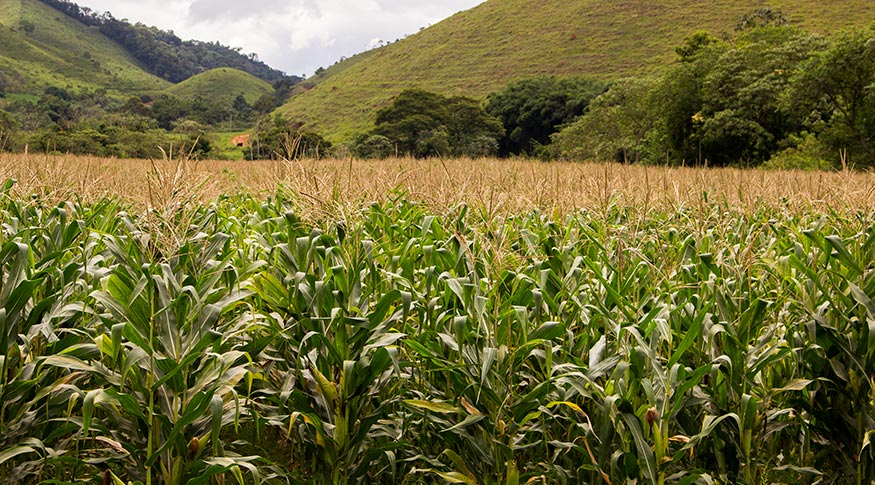
The Brazilian crop of cereals, legumes and oilseeds is expected to reach 298.0 million tonnes, according to the July estimate of the Systematic Survey of Agricultural Production (LSPA), released today (13) by the IBGE. This result is 5.5% lower than the crop of 2023 (315.4 million tonnes), or 17.4 million tonnes less, and 0.7% higher (2.2 million tonnes) than the June estimate.
The area to be harvested was 78.6 million hectares, an increase of 0.9% (727.2 thousand hectares) compared to 2023; and an increase of 264,488 hectares (0.3%) compared to June. Compared to the previous year, there was growth in the areas of rice (4.9%), cotton (13.1%), beans (6.0%) and soybeans (3.2%). Corn (-3.2%), wheat (-11.2%) and sorghum (-5.3%) showed reductions.
The manager of LSPA, Carlos Barradas, highlighted that the main reason for that behavior is related to prices at the time of planting. “In the case of rice, the planting area has been decreasing in recent years, although in the 2024 crop it increased due to rice's price rise”. In addition weather problems, the drop in corn production is explained by its “depreciated price, so producers planted less corn and increased the area of cotton”. Cotton production should be a record in the IBGE time series.
Mr. Barradas also highlighted that with regard to soybeans, there were climate problems in the summer crop “mainly in the Central-West region, in the states of Mato Grosso, Mato Grosso do Sul and Goiás, in addition to the problems of excessive rain and flooding in Rio Grande do Sul that reduced the soybean crop in the state”.
Regarding production, there were increases of 10.8% for upland cotton (seed), 1.9% for rice, 7.1% for beans and 22.7% for wheat, as well as decreases of 4.3% for soybeans, 10.3% for corn (reductions of 15.7% in 1st crop corn and 8.9% in 2nd crop corn) and 10.9% for sorghum.
The estimated production of soybeans was 145.4 million tonnes. As for corn, the estimate was 117.6 million tonnes (23.4 million tonnes of corn 1st crop and 94.2 million tonness of corn 2nd crop). Rice production was estimated at 10.5 million tonnes; wheat at 9.5 million tonnes; that of upland cotton (seed) by 8.6 million tonnes; and that of sorghum, by 3.8 million tonnes.
Change in the volume of production of cereals, legumes and oilseeds in the Major Regions in July
Among the Major Regions, the volume of production of cereals, legumes and oilseeds was distributed as follows: Central-West, 144.5 million tonnes (48.5%); South, 81.3 million tonnes (27.3%); Southeast, 27.2 million tonnes (9.1%); Northeast, 26.0 million tonnes (8.7%) and North, 18.9 million tonnes (6.4%).
The estimated production of cereals, legumes and oilseeds showed a positive annual change for two major regions: South (1.9%) and North (12.4%). There was a negative annual change for the others: Central-West (-10.3%), Southeast (-11.3%) and Northeast (-3.5%). Regarding the monthly change, there was growth in the North (2.3%), Central-West (2.9%) and Southeast (0.1%). The others showed a decline: Northeast (-0.2%) and South (-2.8%).
Mato Grosso leads grain production among the states
In the distribution of production by Federation Units, Mato Grosso leads as the largest national grain producer, with a share of 30.6%, followed by Paraná (13.2%), Rio Grande do Sul (11.9%), Goiás (10.5%), Mato Grosso do Sul (7.1%) and Minas Gerais (5.6%), which together represented 78.9% of the total. Regarding regional participation, the distribution is as follows: Central-West (48.5%), South (27.3%), Southeast (9.1%), Northeast (8.7%) and North (6.4%).
The main positive absolute changes in production estimates, in relation to the previous month, occurred in Mato Grosso (4,564,478 t), Roraima (213,091 t), Tocantins (187,921 t), Sergipe (72,026 t), Rondônia (54,516 t), Minas Gerais (30,603 t), Bahia (9,650 t), Maranhão (2,226 t) and Amazonas (2,168 t). The negative changes occurred in Rio Grande do Sul (-2,216,375 t), Mato Grosso do Sul (-436,320 t), Paraná (-150,900 t), Paraíba (-69,378 t), Ceará (-36,312 t), Pará (-28,464 t), Alagoas (-14,377 t), the Federal District (-8,460 t), Rio Grande do Norte (- 5,151 t), Rio de Janeiro (-1,562 t), Pernambuco (-1,024 t) and Amapá (-35 t).
About the LSPA
Implemented in November 1972 with the purpose of meeting users' demands for monthly statistical information, the LSPA provides estimates of planted area, harvested area, quantity produced and average yield of products selected based on criteria of economic and social importance for the country. It allows not only the monitoring of each crop investigated, from the planting intention phase until the end of the harvest, in the calendar year of reference, but also the forecast for the following year's crops. To this end, the survey is carried out in the months of October, November and December. Access the data on Sidra. The next LSPA release will be on September 12.

